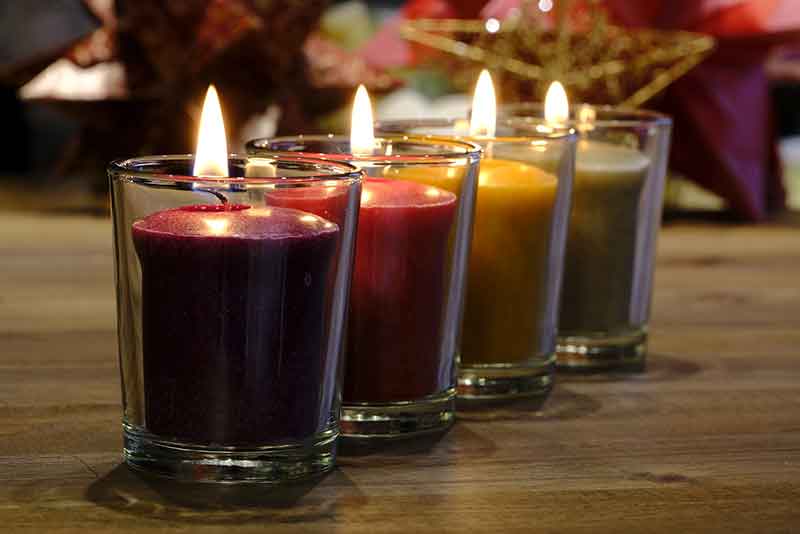How Many Types Of Wax For Candle Making? Explained
Wax candles are sophisticated pieces of art that are pretty famous worldwide now. The beauty, aroma, and luxuriousness of wax candles give you a blissful feeling. Anyone fond of wax candles like me could relate to this.
Wax candle making is an interesting process. Picking a suitable type of wax is one of the crucial steps to get an excellent outcome as you would prefer. This article will discuss the different types of wax used for candle making.
Read – Candle Making As A Hobby
So, how many types of wax for candle making? Many! There are various types of wax, and some examples would be paraffin wax, beeswax, soy wax, palm wax, coconut wax, gel wax, and blended wax.
Despite the type, they all act as the central ingredient in candle making, but they also have unique characteristics. So here’s a bit of information about some of the commonly used types of wax in candle making.
Table of Contents
Types of wax for candle making
- Paraffin wax
This might be a familiar term that you’ve heard in your chemistry class. Paraffin wax, also known as petroleum wax, is the most common wax used in candle making.
Although it isn’t the most eco-friendly type of wax, they still have many perks. Paraffin is considered a versatile type of wax as it has various melt points.
Wax candles come in different shapes, and paraffin is a very suitable wax to make simple container candles as well as intricate structures of candles.
Paraffin wax also has a strong fragrance to it. On top of everything, this tends to be one of the cheapest types of wax. And it is one of the fastest curing wax in candle making.
- Beeswax
By looking at the name, if you predict that beeswax is related to actual bees, well, you are correct. Beeswax is a spinoff of the honey-making process from hives.
The best thing about beeswax is that it doesn’t cause any harm to the environment. Beeswax comes with a subtle sweet-scented aroma and a golden color naturally caused by honey.
Read – What Are The Legal Requirements For Selling Homemade Candles?
This natural type of wax has a long history associated with it. Studies have shown that the origin of beeswax candles traces back to the ancient Egyptian era.
- Soy wax
Over the past years, soy wax has become a demanding wax in the candle-making industry. Soy wax is made of soybean oil and is considered an excellent alternative to paraffin wax.
There are several reasons behind the popularity of soy wax, such as being eco-friendly, relatively cheap, and durable.
Yet, soy wax could come in various formats, such as pure soy wax made 100% out of soybean oil, blended with other vegetable oils, and blended with paraffin as well.
- Coconut wax
Yet another eco-friendly wax, coconut wax, is harvested from coconuts. Coconut wax does not contain any toxic ingredients.
It naturally has a pleasant tropical aroma that lasts for a reasonable time. Moreover, coconut wax burns slower than many other types, making the candles durable. When it comes to the price, coconut wax is high-cost.
Which type of wax is best for candles?

Out of the different types of wax used in candle making, it is tricky to say which one is the best because they have both pros and cons.
Therefore the “Best Type” often depends on your perspective. However, we can generally analyze and determine what type of wax could be relatively better.
We have discussed four types of wax used in candle making, and out of them, paraffin wax is very cheap and easy to make. They also help make different shapes of candles. However, candles made with paraffin tend to be unhealthy for the environment as they release toxic chemicals when burning. Also, they burn pretty fast.
Pure soy wax, wholly derived from soybean oil, can be considered better than paraffin. It is eco-friendly, smells nice, durable, and not very high priced. Pure soy wax has minimal cons, such as being vulnerable to shrinkage, especially in humid conditions.
On the other hand, if soy wax blends with paraffin, that might not be as healthy as pure soy wax. Both beeswax and coconut wax are all-natural options. They have a natural aroma, and they don’t release toxic gases when lit up. But they are neither cheap nor readily available.
Just like that, they have both advantages and disadvantages, which is why it’s hard to pick one over the other. Nonetheless, it’s safe to say that pure soy wax is generally a good choice considering price, durability, fragrance, and impact on the environment.
How do you choose candle wax?
When choosing the type of wax for candle making, it’s essential to consider certain things, for instance, the structure or the type of the candle, durability, and environmental impact.
Wax candles come in different structures. Some are pillar candles, container candles, taper candles, floating candles, and votive candles. The height, thickness, and shape of these types are different.
Therefore wax should be picked accordingly. If we take an example, pillar candles that stand on their own are the most common type, and paraffin wax is an excellent option to make them.
Votive candles, as they are smaller in their size and require support to hold their structure, beeswax is a suitable type to make them.
Furthermore, if you need your candle to last for a long time, the best options would be soy wax and coconut wax. If you prefer to have a strong scent, paraffin wax can meet your expectations.
Still, suppose you like a gentle and natural fragrance that lasts for a considerable time. In that case, you can use either beeswax or coconut wax.
Last but not least, if you are conscious of the environmental impact, paraffin is the last option you would want to use. Pure soy wax, beeswax, and coconut wax make it naturally and burn clean; therefore, they are eco-friendly.
Final thoughts about various types of candle waxes
You can use various types of wax for candle making. Some of them are made with chemicals and some with natural ingredients. Also, in recent days, there have been many blended waxes.
The advantages and disadvantages of them differ from one to the other. You can utilize the given criteria in the article and find the ideal type for you out of the many.
Thank you for reading the post. Stay with HobbyLeads for more about hobbies.








